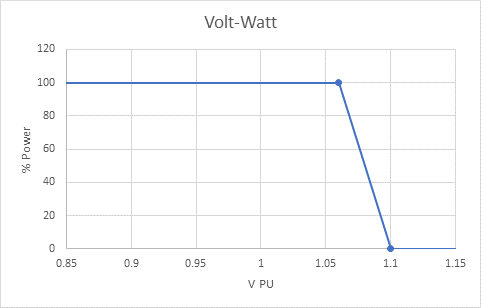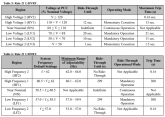Six groups protested CA 21: Clean Coalition, the Solar Energy Industries Association (SEIA), the California Solar Energy Industries Association (CALSEIA), Sunrun, SunSpec Alliance, and the Joint Stakeholders, which consists of Tesla, ABB, Outback Power Technologies, and Enphase Energy.
A lot more on this from the source:
http://docs.cpuc.ca.gov/PublishedDocs/Published/G000/M213/K658/213658887.PDF
What's in it?
1.
Monitor Key Distributed Energy Resource (DER) Data: The inverter takes measurements as it converts power. With the ability to communicate, the inverter can send this information, such as voltage and active and reactive power, to the utility. This information is to be sent via IEEE 2030.5, using your internet connection and is something you agree to for a grid connection.
2.
DER Disconnect and Reconnect Command (Cease to Energize and Return to Service): In certain situations, the utility may need to de-energize circuits to perform maintenance or repairs, or to prevent unsafe conditions during an emergency. With this function, the utility can send a command to the inverter to disconnect the DER from the local electrical system or prevent the DER from energizing the local system.
3.
Limit Maximum Active Power Mode: This function establishes an upper limit on active power that a DER or system of DERs can produce or use. By limiting active power, this function helps to prevent adverse voltage conditions on the distribution grid and other related issues, especially in high DER penetration areas.
4.
Set Active Power Mode: Similar to the previous function, this function establishes the active power that a DER or a system of DERs can produce or use.
5.
Frequency Watt Mode: As a system-wide parameter, frequency is affected by all devices connected to the electric power system. High frequency events are often a sign of too much power in the grid and vice versa. Frequency Watt Mode is one method for countering these events, which is accomplished by reducing power in response to rising frequency or vice versa.
6.
Volt Watt Mode: As a general rule, the production of active power raises voltage. This relationship can be problematic when solar photovoltaic (PV) systems interconnect in large numbers on distribution circuits where utilities have not planned for voltage rise and where existing distribution equipment cannot lower voltage. Volt Watt Mode modifies active power from DERs based on predetermined voltage ranges to prevent the local voltage on the distribution circuit from rising/dropping outside of allowable levels. Voltage regulators are a common mitigation measure used on circuits with and without PV to ensure that voltage stays within acceptable levels all the way to the end of the circuit. As PV injects power to the grid at various points along a circuit, the complex interaction of ever-changing load and generation conditions can cause imbalances in voltage levels. These voltage excursions can be mitigated by the smart inverter’s Volt Watt Mode raising or lowering voltage but that change in voltage reduces the amount of real power that is exported.
7.
Dynamic Reactive Support: This function is similar to the Volt Var Function from Phase 1. However, instead of modifying reactive power in response to the steady-state voltage level, this function responds to the rate of change in voltage. 8. Scheduling Power Values and Models: This function enables scheduling of active and reactive power, as well as modification of settings of other functions.





